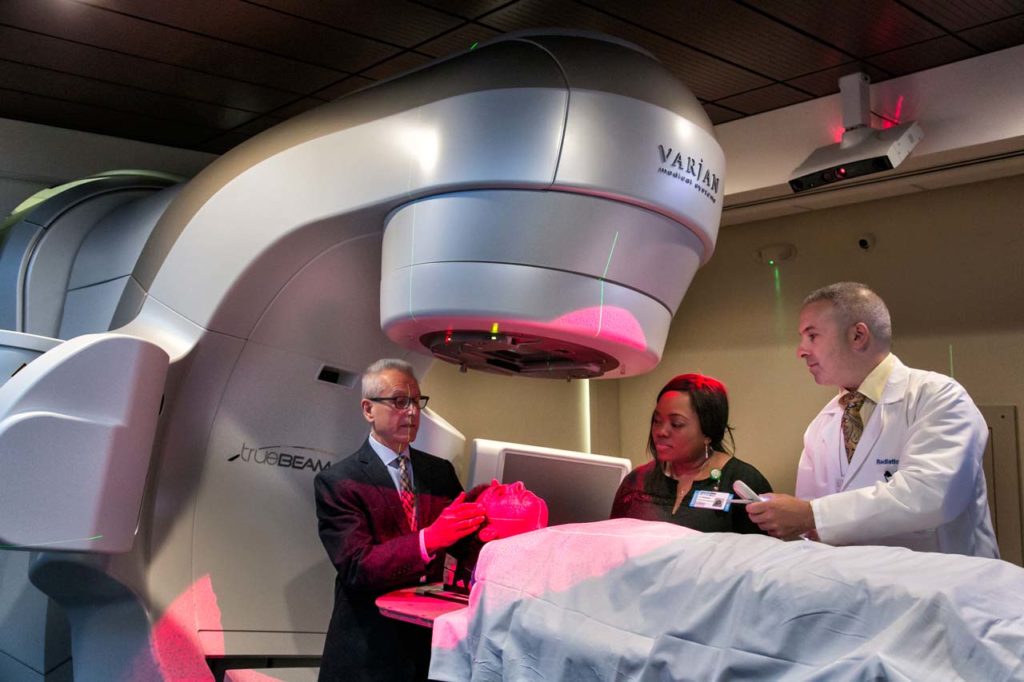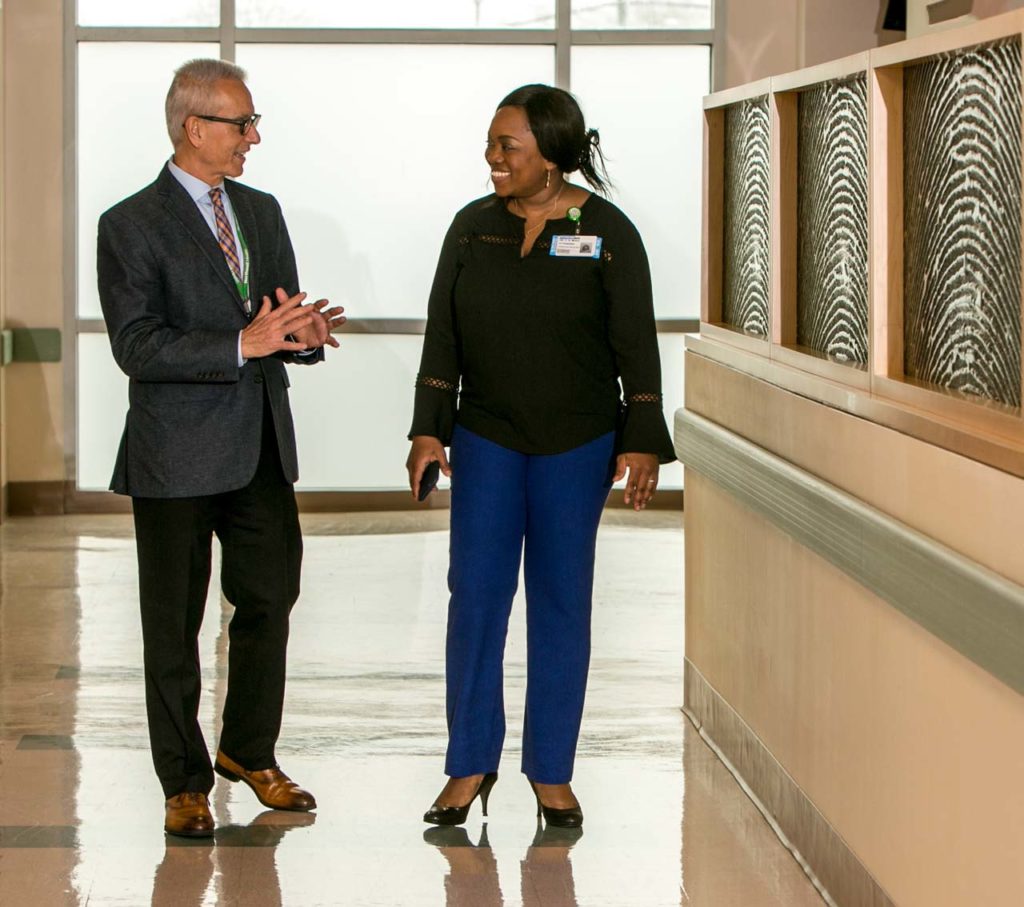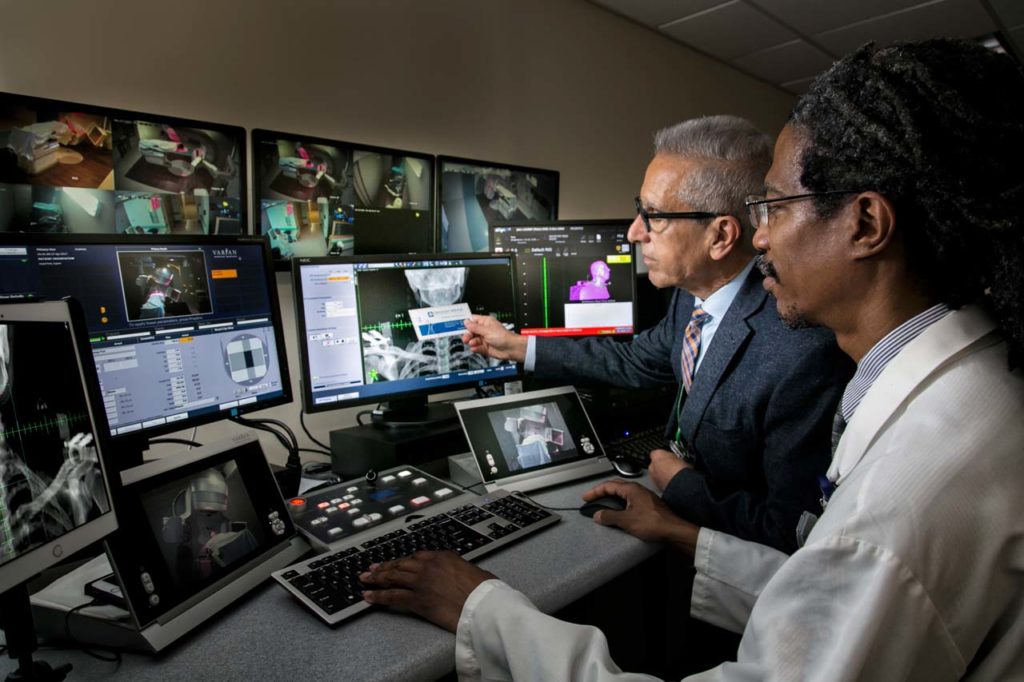how SIUH ’s TruBeam technology is helping doctors treat complex cancer cases with greater accuracy
by Jessica Jones-Gorman • Photos By Amessé Photography
In 2009, Dr. Phillip Vigneri joined the staff of Staten Island University Hospital. His task, using his 25 years of experience, was to oversee the modernization of the hospital’s radiation oncology department to meet the expectation and mission of the Northwell Health system.

“For the past eight years, we have worked to upgrade all of the equipment within the department and align ourselves with the hospital’s broad network of research opportunities and cooperative trials,” noted Vigneri, who currently chairs the Department of Radiation Medicine at SIUH.
“Seeking to benefit the Staten Island community, we added several new programs for oncology patients. This has included stereotactic radiation for the lungs and prostate as well as the Calypso 4D prostate localization and tracking system. Stereotactic radiation allows us to deliver complicated treatments in an outpatient setting. With technology such as the Calypso system, which is in fact GPS for the body, we can deliver treatment with great accuracy.”
Collaborating with clinicians of a similar mind, including Dr. Cynara Coomer, SIUH’s chief of breast surgery and director of the hospital’s Comprehensive Breast Center, Vigneri has been an advocate for progressive treatment approaches, such as partial breast radiation treatment.

“After being presented with new research indicating that sometimes more aggressive forms of treatment do not benefit every patient, Dr. Coomer and I were able to exploit more of these advanced delivery systems, such as image-guided radiation therapy, that could be used to treat cancer with speed and accuracy while avoiding healthy tissues and organs,” said Vigneri. “We introduced the technologies of the TruBeam linear accelerator at SIUH several months ago to achieve that aim. In that short time, we have been pleased with the results.”
The TruBeam, a highly precise radiotherapy treatment machine, is designed to maximize therapy benefits for patients while minimizing the effects on healthy tissues. This can be crucial for tumors of the breast, prostate, lung, brain, rectum, and delicately located cancers in the upper abdomen.
The system can utilize respiratory gating, real-time tracking, contour alignment, and real-time imaging to deliver treatments in a streamlined system—an integration that allows doctors to offer advanced options suited to an individual patient’s specific cancer needs.
“In radiation oncology, our goal has been to treat the tumor, and this has required accuracy,” Vigneri said. “You want to concentrate treatment where you need it and minimize collateral damage. TruBeam does not magically pinpoint the beam’s delivery; it’s important to remember that cancer is not a pinpoint process. But it has improved the balance of adequate treatment against long-term side effects.”
Vigneri said the system allows his staff to concentrate on a desired area while decreasing long-term harm to nearby organs and appendages. The technology also carries on with his field’s prior advances—marrying imaging and treatment.
Vigneri did his residency at the University of Pennsylvania before going into private practice, first at Long Island Jewish Medical Center and then in Allentown, Pennsylvania. So returning to the North Shore-LIJ system in 2004, as it was growing into Northwell Health, was something of a homecoming. Much had changed.
“Twenty years ago, we were happy if someone made it through a cancer diagnosis at whatever price,” Vigneri said. “Now we know that success is available for more than half of our patients when the cancer is detected early, and we’re able to give them a good quality of life. The technologies of a machine like TruBeam help us realize this goal of personalized, safe therapy.”

TruBeam rotates around a patient’s body to deliver radiation therapy from nearly any angle. The system provides real-time imaging, which allows the doctor to direct higher doses of radiation with greater accuracy. Using its respiratory gating technology, doctors can synchronize beams with a patient’s breathing, which enables them to treat a moving lung tumor as if it were standing still. Speed and precision are the hallmarks of the system. A standard intensity-modulated treatment would typically take 10 to 20 minutes, but with TruBeam, it can be done in less than two. Complex radiosurgery, which typically takes 40 minutes to an hour, can now be completed in five to 20 minutes.
“All of these advancements improve quality of life for patients after treatment,” Vigneri said. “For many years, patients undergoing radiation treatment had to deal with skin irritation—burns and redness—because the skin acted as a barrier and caught the brunt of the treatment. But as these different techniques evolved and more direct methods were introduced, the skin irritation has lessened. We are also seeing less bladder and bowel issues and less long-term dryness in the mouth. Even permanent hair loss is now infrequent.”

TruBeam is the latest development in linear accelerators, built from the ground up on a digital platform.
“For years we could localize the tumor location only with standard X-rays, which could only visualize bony anatomy. Now, with information from CT scans built into the platform, we can see the soft tissue where tumors reside,” said Vigneri. “We are marrying digital enhancements and can put together complicated treatment plans…not only controlling the dosage of radiation but also the rate of how fast it will change. We are able to use all of these tools and improvements to provide more focused treatment for the patient that translates into less intense exposure for the overall body. This has major long-term benefits.”
Northwell Health and SIUH have expended significant resources to achieve this goal for the Staten Island community.
“Northwell is committed to oncology research,” Vigneri said. “And while SIUH is the largest hospital on Staten Island, we’re embedded in Northwell’s even larger system that’s bringing the most current treatments to the residents of this borough. We fine-tune therapies every time we use them, and in the future, the opportunities will only continue to grow. It’s a very exciting time.”

Staten Island University Hospital
475 Seaview Avenue / 718.226.9000
northwell.edu


